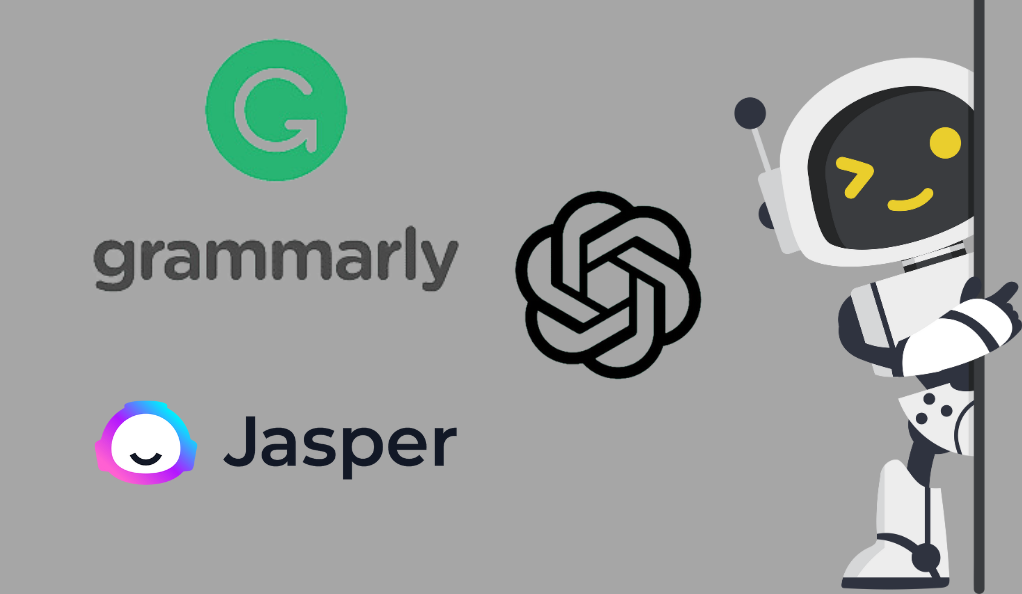Overview of AI Technology
Artificial Intelligence (AI) refers to the simulation of human intelligence in machines, programmed to think and learn like humans. In the context of academic writing, AI has become a transformative force, enabling writers, researchers, and educators to enhance their writing process through automation, analysis, and assistance.

The Emergence of AI in Academic Writing
The integration of AI into academic writing is not a sudden phenomenon but a gradual evolution. Here’s a brief timeline:
- Late 1990s: Introduction of basic grammar and spell-check tools.
- Early 2000s: Development of plagiarism detection software.
- 2010s: Introduction of AI-driven writing assistants, summarization tools, and personalized feedback systems.
- 2020s: Expansion into deep learning models for content generation, analysis, and collaboration.
Table 1: Evolution of AI in Academic Writing
| Period | Innovation | Impact |
|---|---|---|
| Late 1990s | Grammar and spell-check tools | Basic error correction |
| Early 2000s | Plagiarism detection software | Academic integrity enforcement |
| 2010s | AI-driven writing assistants | Enhanced writing quality, personalized feedback |
| 2020s | Deep learning models for content generation | Advanced content analysis, collaboration, and creativity enhancement |
AI-powered Tools and Their Applications
- Grammar and Style Checkers: Tools like Grammarly and ProWritingAid utilize AI algorithms to detect grammatical errors, stylistic issues, and provide suggestions for improvement.
- Plagiarism Detection: Platforms like Turnitin employ AI to compare text against vast databases, ensuring originality and academic integrity.
- Automated Summarization and Paraphrasing: AI models can condense lengthy texts into concise summaries or rephrase content to avoid redundancy.
- Predictive Text and Suggestions: AI can predict the next word or sentence, aiding in faster and more coherent writing.
Comparison Table: AI Tools in Academic Writing
| Tool Type | Example | Function |
|---|---|---|
| Grammar and Style Checkers | Grammarly | Error detection, stylistic improvement |
| Plagiarism Detection | Turnitin | Originality check, academic integrity enforcement |
| Automated Summarization | SMMRY | Text condensation, quick overview |
| Predictive Text | Google Smart Compose | Speed up writing, coherence enhancement |
AI-powered Writing Tools

1. Grammar and Style Checkers
Overview
Grammar and style checkers utilize AI algorithms to analyze text for grammatical errors, stylistic inconsistencies, and language usage. They provide real-time feedback and suggestions to enhance writing quality.
Examples
- Grammarly: Offers personalized recommendations for grammar, punctuation, style, and tone.
- ProWritingAid: Focuses on in-depth writing reports, including readability and sentence structure analysis.
Benefits
- Accuracy: Identifies subtle errors that manual proofreading might miss.
- Efficiency: Provides instant feedback, saving time in the editing process.
- Customization: Allows setting specific writing goals and audience targeting.
Challenges
- Over-dependence: May lead to reliance on automated suggestions without critical thinking.
- Context Sensitivity: Sometimes struggles with understanding nuanced context or specialized terminology.
2. Plagiarism Detection
Overview
Plagiarism detection tools employ AI to compare text against extensive databases, ensuring originality and adherence to academic integrity standards.
Examples
- Turnitin: Widely used in academia to detect similarities with published works.
- Copyscape: Utilized mainly in the content industry to ensure web content originality.
Benefits
- Integrity Enforcement: Helps maintain academic and professional ethics.
- Comprehensive Analysis: Scans vast databases, including academic papers, websites, and books.
- Educational Value: Educates writers about proper citation and referencing.
Challenges
- False Positives: May flag common phrases or properly cited content as plagiarism.
- Accessibility: High-quality tools may be costly or restricted to institutional access.
3. Automated Summarization and Paraphrasing
Overview
Automated summarization and paraphrasing tools use AI to condense or rephrase content. Summarization provides concise overviews, while paraphrasing alters the wording without changing the meaning.
Examples
- SMMRY: Offers quick summarization of lengthy articles or documents.
- QuillBot: Provides paraphrasing options with different writing styles and tones.
Benefits
- Time-saving: Facilitates quick understanding of extensive materials.
- Versatility: Useful for students, researchers, content creators, and more.
- Creativity Enhancement: Paraphrasing tools aid in finding alternative expressions.
Challenges
- Content Integrity: Summarization may omit essential details or nuances.
- Quality Variation: Paraphrasing quality may vary, requiring manual refinement.
Enhancing Creativity and Efficiency

1. AI-driven Research Assistance
Overview
AI-driven research assistance involves using AI algorithms to sift through vast amounts of data, identify relevant information, and provide insights. It’s a powerful tool for academics, researchers, and writers.
Examples
- Semantic Scholar: Utilizes AI to provide relevant research papers and insights.
- Zapier with AI Integration: Automates data collection and organization for research.
Benefits
- Time-saving: Quickly finds relevant information from extensive databases.
- Precision: Filters information based on specific criteria, reducing irrelevant results.
- Insight Generation: Analyzes data patterns to provide unique insights and hypotheses.
Challenges
- Data Overload: Managing and interpreting massive amounts of information.
- Accessibility: Some advanced tools may require technical expertise or subscriptions.
2. Enhancing the Writing Process
Overview
AI can significantly enhance the writing process by providing predictive text, personalized feedback, and content optimization. It acts as a virtual writing assistant.
Examples
- Grammarly with AI-driven Goals: Tailors writing feedback based on audience and intent.
- Jasper (formerly Jarvis): AI-powered content generator that aids in creative writing.
Benefits
- Personalization: Adapts to individual writing styles and objectives.
- Creativity Boost: Offers suggestions and alternatives to spark creativity.
- Efficiency: Speeds up the writing process with predictive text and instant feedback.
Challenges
- Over-reliance: Potential loss of unique voice or critical thinking.
- Technical Barriers: May require learning curves or specific configurations.
3. Facilitating Collaboration
Overview
AI facilitates collaboration by enabling real-time editing, feedback sharing, and project management. It enhances teamwork in academic and professional writing environments.
Examples
- Google Workspace with AI Features: Enables real-time collaboration and suggestions.
- Monday.com with AI Integration: Manages collaborative writing projects and deadlines.
Benefits
- Synchronization: Allows multiple users to work simultaneously on a document.
- Feedback Loop: Provides instant feedback and tracks changes for seamless collaboration.
- Project Management: Organizes tasks, deadlines, and roles in collaborative writing.
Challenges
- Privacy Concerns: Sharing sensitive information in collaborative platforms.
- Compatibility: Ensuring seamless integration with various tools and platforms.
Ethical Considerations and Challenges
1. Bias and Fairness
Overview
Bias and fairness in AI are complex issues that extend beyond mere algorithmic functioning. They touch on social, cultural, and ethical dimensions that can have profound impacts on academic writing.
Understanding Bias
- Data Bias: AI models trained on biased data can perpetuate stereotypes and prejudices.
- Algorithmic Bias: Even unbiased data can lead to biased outcomes due to algorithmic design.
Examples
- Gender Bias: Some AI writing tools have been found to favor gendered language.
- Cultural Bias: Algorithms may prioritize Western perspectives, marginalizing other viewpoints.
Addressing Bias
- Inclusive Training Data: Ensuring diversity in training data can mitigate bias.
- Regular Auditing: Continuous monitoring and adjustment of algorithms promote fairness.
Challenges
- Complexity of Bias Detection: Identifying subtle biases requires expertise and vigilance.
- Ethical Dilemmas: Balancing fairness with accuracy and efficiency can be challenging.
2. Intellectual Property Concerns
Overview
Intellectual property (IP) concerns in AI-driven academic writing are multifaceted, encompassing authorship, copyright, plagiarism, and more.
Understanding IP Rights
- AI Authorship: Determining ownership and rights for AI-generated content is complex.
- Fair Use vs. Infringement: Striking a balance between summarization and originality.
Examples
- AI as Co-author: Some researchers have listed AI models as co-authors, raising ethical questions.
- Content Scraping: Automated summarization tools may inadvertently violate copyright laws.
Addressing IP Concerns
- Clear Guidelines: Establishing and adhering to ethical and legal guidelines.
- Education and Awareness: Educating users about IP rights and responsible AI usage.
Challenges
- Legal Ambiguity: Evolving laws and regulations create uncertainty.
- Enforcement Difficulties: Monitoring and enforcing IP rights in the digital age is complex.
3. Dependence on Technology
Overview
Dependence on AI technology in academic writing raises concerns about human autonomy, skill development, and social interaction.
Understanding Dependence
- Skill Erosion: Over-reliance on AI may diminish critical thinking and writing skills.
- Social Interaction: Excessive use of AI in collaboration may reduce human interaction.
Examples
- Automated Grading Systems: May lead to standardized thinking and stifle creativity.
- Virtual Collaboration Tools: May hinder the development of interpersonal skills.
Addressing Dependence
- Balanced Integration: Encouraging a blend of human judgment with AI assistance.
- Training and Education: Teaching responsible and effective use of AI tools.
Challenges
- Accessibility and Equity: Ensuring that AI tools are accessible to all, regardless of socio-economic status.
- Technological Literacy: Navigating the learning curve associated with complex AI tools.
Case Studies and Real-world Applications
1. Universities and Research Institutions
Overview
Universities and research institutions are at the forefront of integrating AI into academic writing and research processes. The applications are diverse and transformative.
Applications
- Research Assistance: AI tools like Semantic Scholar help researchers find relevant literature.
- Automated Grading: AI algorithms provide consistent and quick grading of student assignments.
- Collaborative Platforms: Tools like Google Workspace facilitate real-time collaboration among researchers.
Case Studies
- MIT’s AI Research: MIT has developed AI models to assist in scientific research and writing.
- Stanford’s AI in Education: Stanford utilizes AI for personalized learning and writing assistance.
Benefits
- Efficiency: Accelerates research processes and enhances writing quality.
- Innovation: Fosters creativity through advanced data analysis and insights.
Challenges
- Ethical Considerations: Ensuring fairness, privacy, and intellectual property rights.
- Accessibility: Providing equal access to AI tools across diverse academic communities.
2. AI in Scientific Publishing
Overview
AI is revolutionizing scientific publishing by enhancing peer review, content creation, and accessibility.
Applications
- Peer Review Automation: AI algorithms can perform initial screening of manuscripts.
- Content Summarization: Tools like SMMRY provide concise overviews of scientific articles.
- Accessibility Enhancement: AI-driven text-to-speech tools make content accessible to visually impaired readers.
Case Studies
- Springer Nature’s AI Tools: Utilizes AI for manuscript screening and content recommendations.
- Elsevier’s AI Platform: Employs AI for personalized content delivery and research assistance.
Benefits
- Quality Control: Ensures consistency and reduces human error in peer review.
- Accessibility: Makes scientific content more accessible and user-friendly.
Challenges
- Bias Prevention: Ensuring unbiased peer review and content recommendations.
- Intellectual Property Rights: Balancing content summarization with respect for original work.
3. Success Stories and Lessons Learned
Overview
The integration of AI into academic writing has led to numerous success stories, offering valuable lessons for future applications.
Success Stories
- Grammarly in Academia: Widely used by students and academics to enhance writing quality.
- OpenAI’s GPT Models: Utilized for creative writing, research assistance, and content generation.
Lessons Learned
- Ethical Compliance: The importance of adhering to ethical guidelines and legal regulations.
- Human-AI Collaboration: The value of combining human judgment with AI capabilities.
Benefits
- Inspiration: Success stories inspire innovation and encourage responsible AI integration.
- Guidance: Lessons learned provide a roadmap for future developments and best practices.
Challenges
- Scalability: Adapting successful models to various academic disciplines and contexts.
- Sustainability: Ensuring long-term viability and ethical sustainability of AI applications.
The Future of AI in Academic Writing
Predictive Analytics and Personalized Feedback
Applications
AI’s applications in predictive analytics and personalized feedback include Adaptive Learning Systems, where AI can create personalized learning paths based on individual writing styles and needs. Tools like Google Smart Compose can predict and suggest text, enhancing writing efficiency.
Future Developments
In the future, AI could analyze tone and emotion to provide feedback on writing’s emotional impact. AI-driven predictive analytics could also facilitate more dynamic and responsive collaboration, opening new avenues for real-time interaction and feedback.
Benefits
The benefits of predictive analytics and personalized feedback in academic writing are manifold. Tailored feedback enhances learning and writing development, allowing for a more individualized approach. Predictive text models speed up the writing process and reduce errors, contributing to overall efficiency.
Challenges
However, challenges exist, such as ensuring the confidentiality and security of personal writing data. Bias mitigation is another critical concern, as AI models must be carefully designed and monitored to prevent biases in personalized feedback and predictions.
Integration with Virtual Reality (VR) and Augmented Reality (AR)
Overview
The integration of VR and AR with AI in academic writing opens up immersive and interactive learning experiences.
Applications
Immersive Writing Environments: VR can create virtual writing labs or collaborative spaces. AR-enhanced Research: Augmented reality can overlay data and insights onto physical texts or environments.
Future Developments
Virtual Academic Conferences: VR could enable immersive and interactive academic conferences and workshops. AR-guided Library Research: Augmented reality could guide researchers through physical libraries, linking to digital resources.
Benefits
Engagement: Immersive environments enhance engagement and creativity. Accessibility: VR and AR can make academic writing and research more accessible to remote or disabled individuals.
Challenges
Technological Barriers: Ensuring compatibility and ease of use across various devices. Cost and Accessibility: Making VR and AR tools affordable and accessible to all academic institutions.
3. Potential for Democratizing Education
Overview
AI has the potential to democratize education by making high-quality writing tools and resources accessible to diverse populations.
Applications
Open-source AI Writing Tools: Free AI-driven writing assistance can level the playing field for students worldwide. AI-driven MOOCs: Massive Open Online Courses (MOOCs) with AI tutors can provide personalized education at scale.
Future Developments
Global Collaboration Platforms: AI could facilitate global academic collaboration, bridging cultural and geographical gaps. Localized Content Generation: AI can create and translate academic content into various languages, enhancing global accessibility.
Benefits
Inclusivity: AI can make academic writing resources available to underserved communities. Global Reach: AI-driven platforms can connect academics and students worldwide.
Challenges
Quality Assurance: Ensuring that democratized AI tools maintain high educational standards. Ethical Considerations: Balancing accessibility with privacy, security, and intellectual property rights.
Conclusion
The integration of AI into academic writing is revolutionizing the way we approach grammar, style, predictive analytics, immersive experiences, and democratizing education. From enhancing writing quality to creating immersive VR and AR environments, AI offers exciting possibilities. The potential to make education more inclusive and globally accessible is particularly promising. However, these advancements come with challenges such as bias, data privacy, and quality assurance that must be thoughtfully addressed. The future of AI in academic writing holds great promise, blending innovation with responsibility, and opening new horizons for growth and collaboration.
At bitvestment.software, our commitment is to deliver unbiased and reliable information on subjects like cryptocurrency, finance, trading, and stocks. It's crucial to understand that we are not equipped to offer financial advice, and we actively encourage users to conduct their own comprehensive research.
Read More